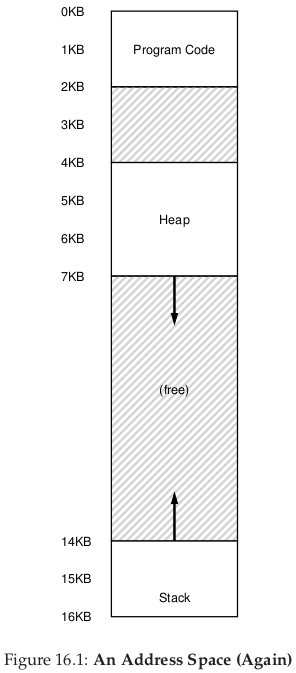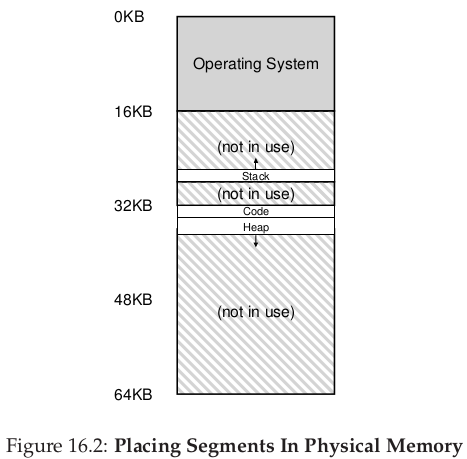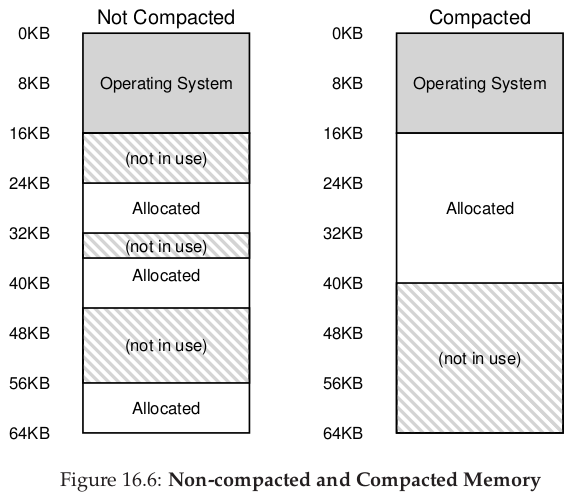1. Segmentation
-


Segment VA Base Size ------- ------ ---- ---- Code 0-2K 32K 2K Heap 4-7K 34K 3K (grows positive) Stack 16-14K 28K 2K (grows negative)
2. Address Translation Examples
-
Segment VA Base Size ------- ------ ----- ---- Code 0-2K 32768 2K Heap 4-7K 34816 3K (grows positive) [4K = 4096] [34816 + 3K = 37888] Stack 16-14K 28672 2K (grows negative) [16K = 16384] Virtual Address 100 (Code) --> Physical Address 32768 + 100 = 32868 Virtual Address 4200 (Heap) --> Physical Address 34816 + (4200 - 4096) = 34920 Virtual Address 15360 (Stack) --> Physical Address 28672 - (16384 - 15360) = 27648 Segmentation Violation = Segmentation Fault = Illegal Virtual Address: Virtual Address 8000 (Heap) --> Physical Address 34816 + (8000 - 4096) = 38720 ≥ 37888
3. Segment Mapping Examples
-
16K virtual address space --> 14-bit virtual address
max segment size 4K --> 12-bit offset
2-bit segment number

4200 = 01 0000 0110 1000


specify SEG_MASK, SEG_SHIFT, and OFFSET_MASK: ________________
4. Segment Options and Protection
5. Fragmentation
6. Exercises
-
Exercises from the book using segmentation.py:
1. First let's use a tiny address space to translate some addresses. Here's a simple set of parameters with a few different random seeds; can you translate the addresses?
segmentation.py -a 128 -p 512 -b 0 -l 20 -B 512 -L 20 -s 0 segmentation.py -a 128 -p 512 -b 0 -l 20 -B 512 -L 20 -s 1 segmentation.py -a 128 -p 512 -b 0 -l 20 -B 512 -L 20 -s 2
2. Now, let's see if we understand this tiny address space we've constructed (using the parameters from the question above). What is the highest legal virtual address in segment 0? What about the lowest legal virtual address in segment 1? What are the lowest and highest illegal addresses in this entire address space? Finally, how would you run segmentation.py with the -A flag to test if you are right?


